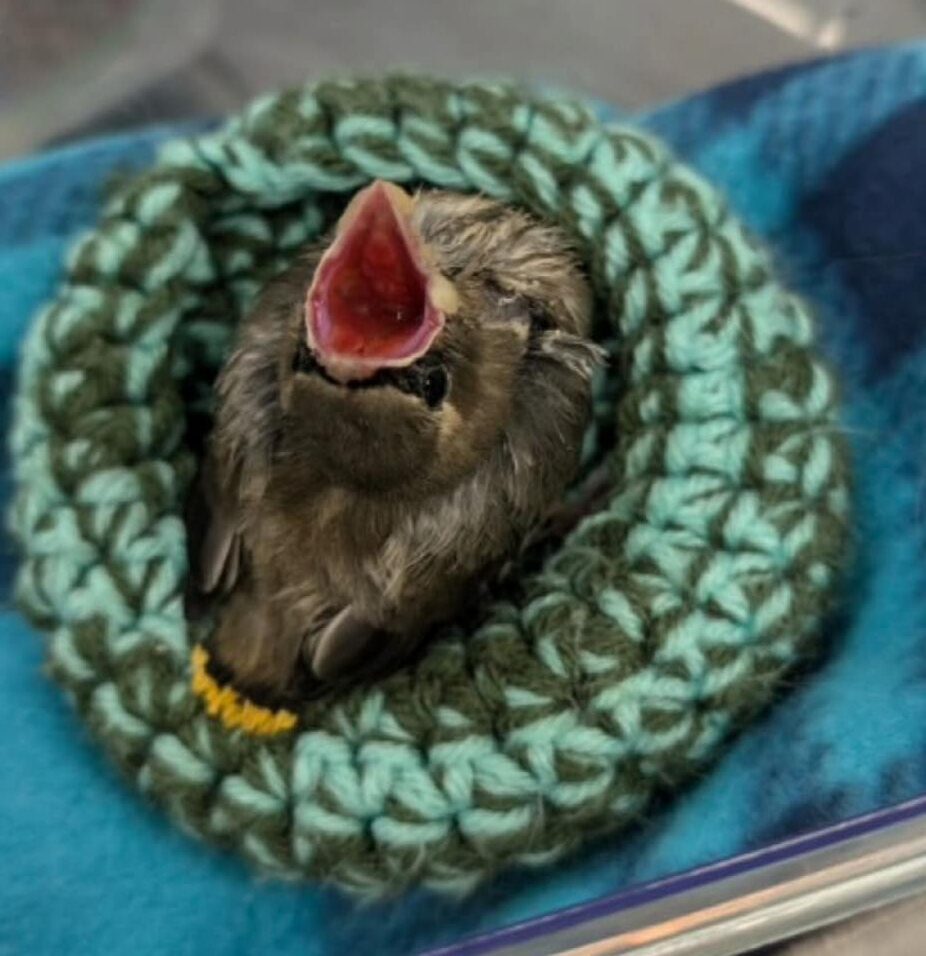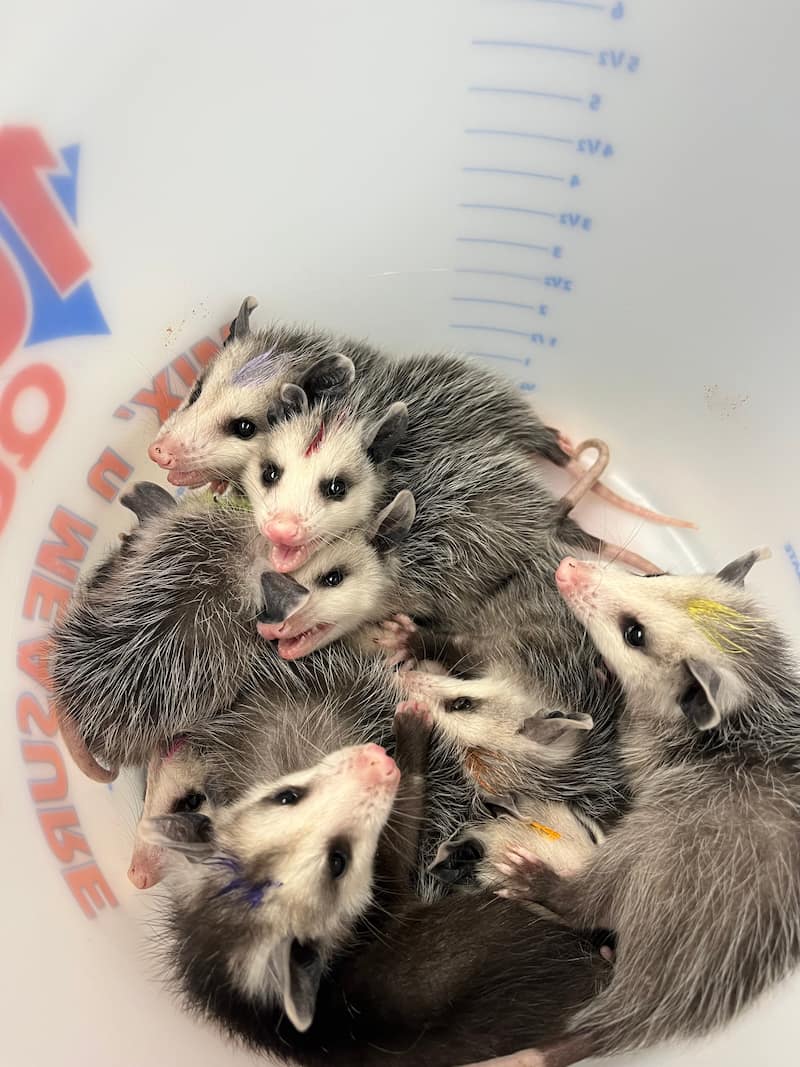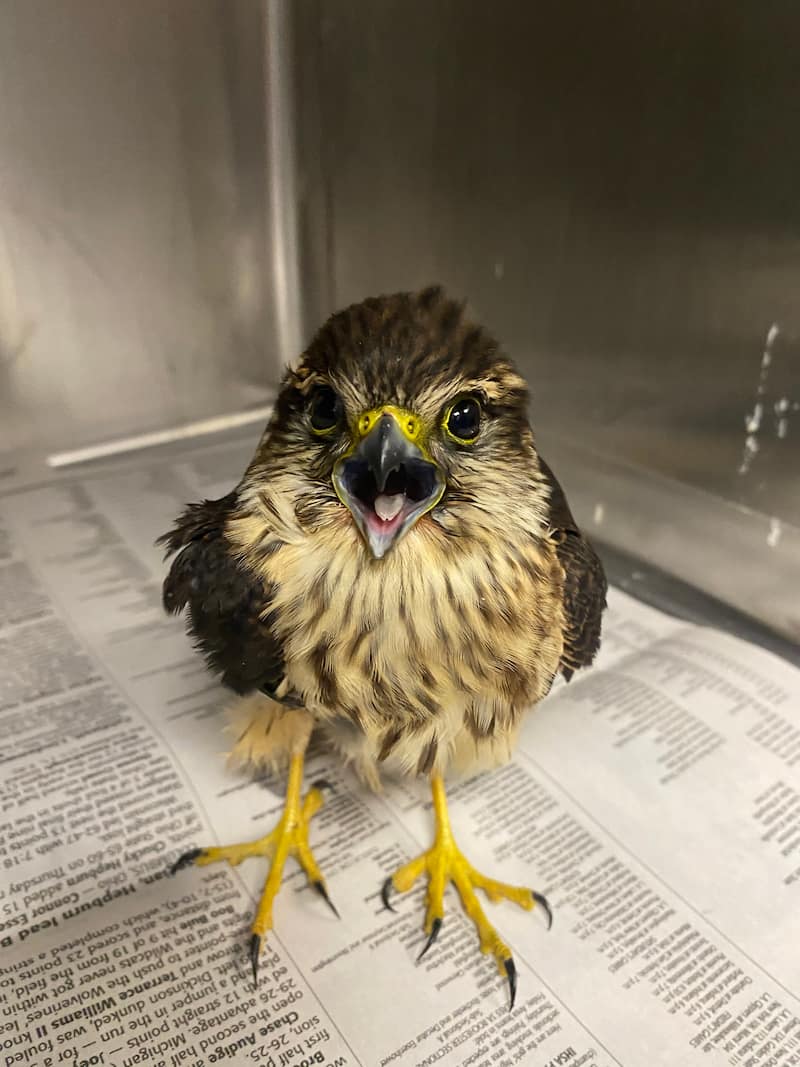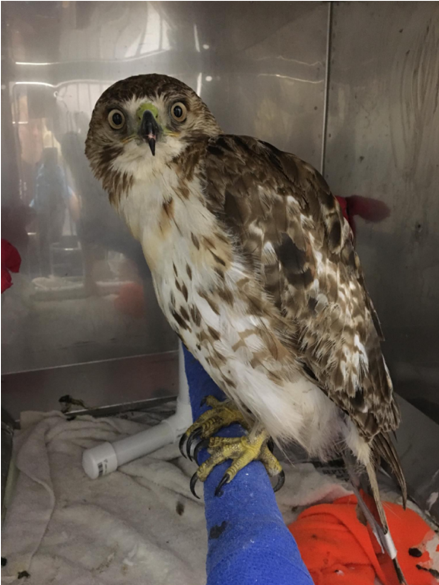 An adult Red-tailed Hawk presented to the Wildlife Medical Clinic after being found on the side of a highway. The finder was concerned the hawk had been hit by a car and might have a broken wing.
An adult Red-tailed Hawk presented to the Wildlife Medical Clinic after being found on the side of a highway. The finder was concerned the hawk had been hit by a car and might have a broken wing.
We performed a thorough physical exam and radiographs (x-rays) to determine the extent of the injuries. It became clear that the hawk did indeed have a complicated fracture of the left humerus, the largest bone in the wing. The fracture was also open, meaning that this bird was hit was such force or at such an angle, that its bone had fractured and pierced through the skin.
During the exam, it was also discovered that the patient was blind in its right eye. While an injury like this can be due to trauma such as being hit by a car, it was determined that this injury happen long before the bird sustained its fracture. Due to the old age of this injury and the decent body condition this bird was found in, we knew that the hawk had been surviving in the wild for months, despite being blind in one eye. 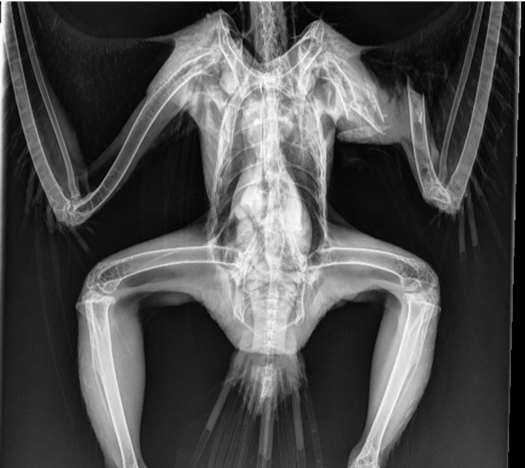
It is almost unheard of for hawk or falcon species with blindness to survive in the wild as these species use binocular vision to find and capture their prey. Visually impaired hawks or falcons will usually starve to death as a result of being unable to find food.
However, this patient appeared to be an exception to the rule! Since this hawk had been surviving in the wild with one visual eye before its accident, it was our hope that if we could fix its wing injury, it may still be able to survive despite this visual impairment.
The hawk was taken to surgery to repair the fracture. A pin was placed through the center of the bone, called an intramedullary pin, to align the fractured pieces and cross-pins were placed perpendicular to the bone and attached to an external bar to keep the pieces stabilized in place.
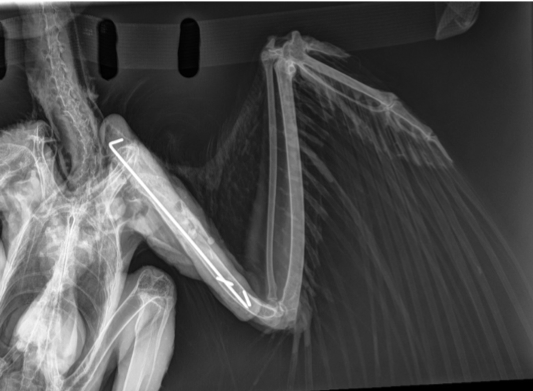
The patient then was placed on cage rest for 6 weeks to allow time to heal and underwent physical therapy to maintain necessary mobility in the wing post-surgery.
After six weeks, the fracture had stabilized and appeared to be sufficiently healed, so the surgical pins were removed. Once the range of motion in the injured wing was restored to normal, the hawk was sent to the Illinois Raptor Center, where it has access to much larger flight cages for continued rehabilitation. There they will help the hawk regain normal flight and assess its ability to hunt live prey the way it will have to in the wild. This hawk still has a long road to full recovery, but we have high hopes that with sufficient time and rehabilitation, it will return to the wild very soon!

